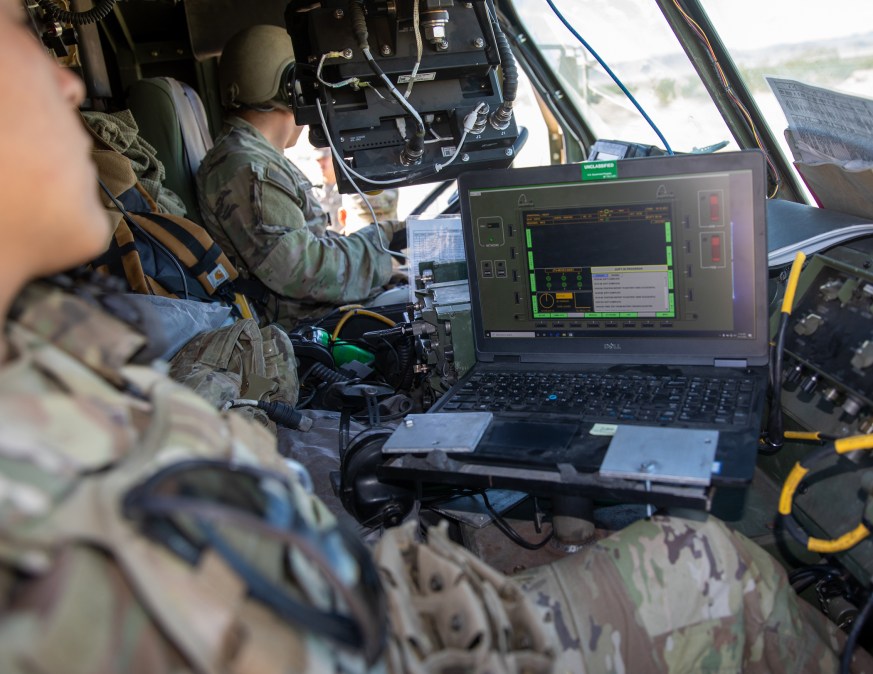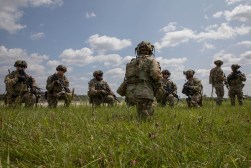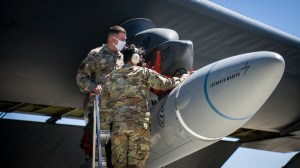The Army is embracing central delivery of services

The Army is hoping to deliver IT tools to units and soldiers faster following a portfolio review of its network capabilities.
Gabe Camarillo, the service’s undersecretary, instituted the capability portfolio review, along with the vice chief of staff, to examine requirements and budgeting to get a better handle on the entire portfolio as the Army continues to modernize its systems.
Along with “harmonizing” the Army’s requirements, that review also gave way to the idea of centrally delivering services and embracing the business model of “as-a-service.” Those two factors combined, Army’s Lt. Gen. John Morrison said, will allow the service to get soldiers capabilities faster.
“If we are providing a capability from the enterprise and we’ve got unit X that is out there and they are procuring a similar capability that can be satisfied through the central delivery of services, why wait?” Lt. Gen. Morrison, deputy chief of staff, G-6, said during AFCEA Northern Virginia’s Army IT Day conference Thursday. “That is what, quite frankly, Army senior leaders are demanding of us at this point. There is no need to wait if we’ve identified what the requirement is and we’ve got a better way to deliver that to the entire Army that gets after this notion of a unified network, that end-to-end visibility that we can maneuver in a contested, congested environment. Why wait? That’s what we’re embarking on now.”
Morrison explained this “as-a-service” model will require increased collaboration with members of industry.
“I would really like to have a conversation with our industry partners about where we’re getting things as a service or maybe even a mix all the second- and third-order effects that comes with that, especially when it comes to supporting operations,” he said. “Think about the exchange of critical threat information that we will have to have in that hybrid environment, so that we both understand the operating landscape, so that missions and operations cannot be impacted.”
ICAM requirement
Morrison stated that the formal requirement for identity, credentialing and access management, or ICAM, has been slowed down some and has not been completed. However, that is not hindering the work the Army is doing on that front.
ICAM will be a central component for the Army moving forward as it transitions from network-centric to data-centric operations, as well as zero trust. In a data-centric network, the paradigm of protecting the perimeter is not always as necessary as it once was because the data and access to it are protected by encryption and credentialing.
In the next 12 months, the Army has several efforts planned, mainly in the Indo-Pacific region, to pilot zero trust where ICAM is foundational.
“We will focus on the I Corps headquarters and the USARPAC headquarters so we can start extending those zero-trust principles from the enterprise — read strategic and operational levels — down into the tactical levels,” Morrison said. “That is all married up with what we’re doing with the Army data plan and this notion of capabilities that we know we need to iterate and grow — we put it in the hands of units and instead of pulling those back when we’re done with an experiment or an exercise, we’re going to leave it there and quite frankly, allow the unit to continue to iterate.”
Morrison added that the Army plans to leave many of these capabilities with units after pilots and exercises conclude as to allow them to continue experimenting and shaping the capability.
“I will tell you principally that we need to mature an operational capability, it is providing value-added, leave it with the unit, because that operational demand makes the machine turn much, much faster and quite frankly, leads to a much more refined requirements development and a much more refined adaptive and accelerated capability development,” he explained. “Quite frankly, I think, the chief of staff out at USARPAC said it best: If you’re giving me a capability that I can’t do today, and I’m 10% better, then I’m 10% better. Now think about it, next year and you’re 15%, 20%. But this notion of iterative development is going to be absolutely key.”






